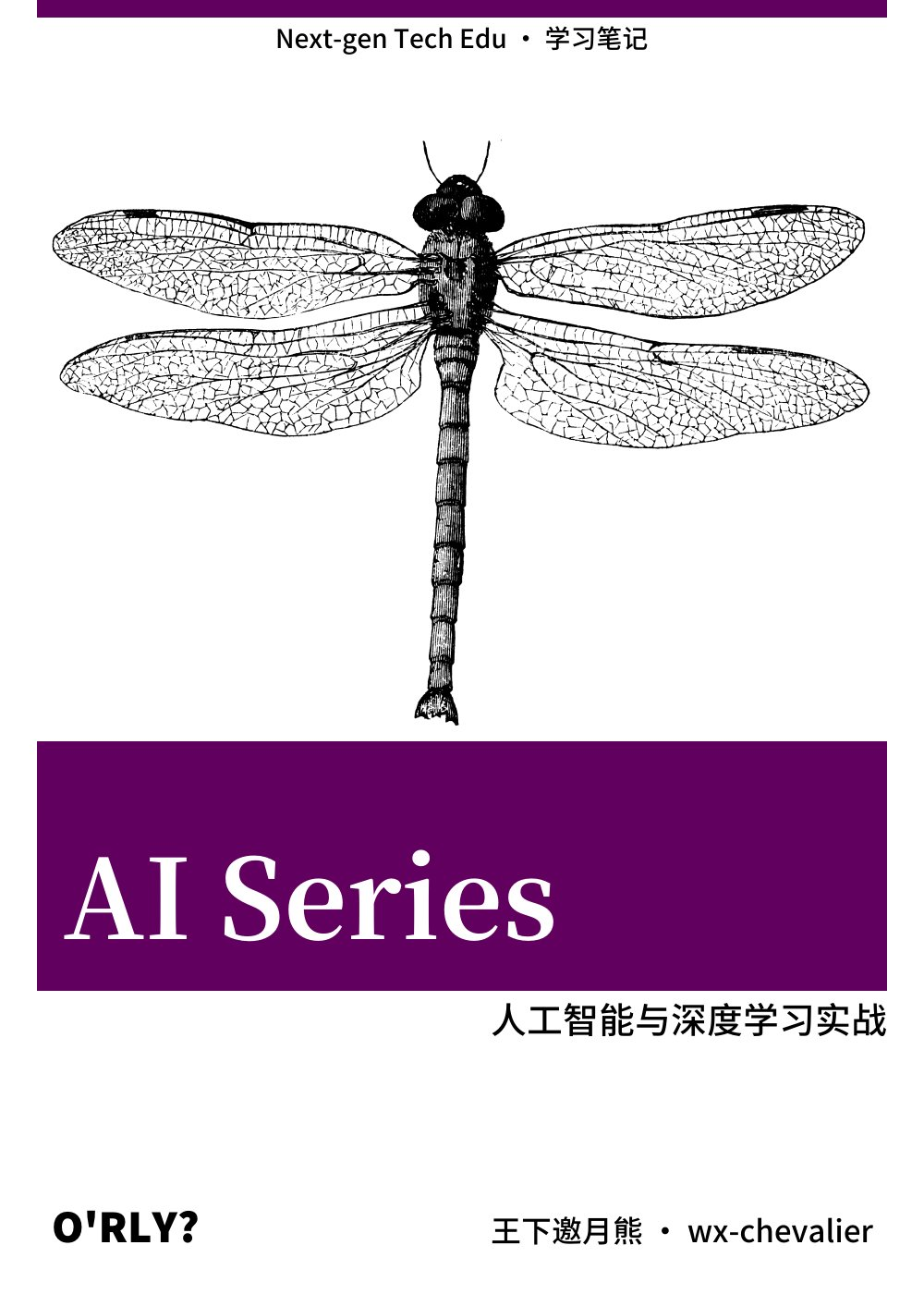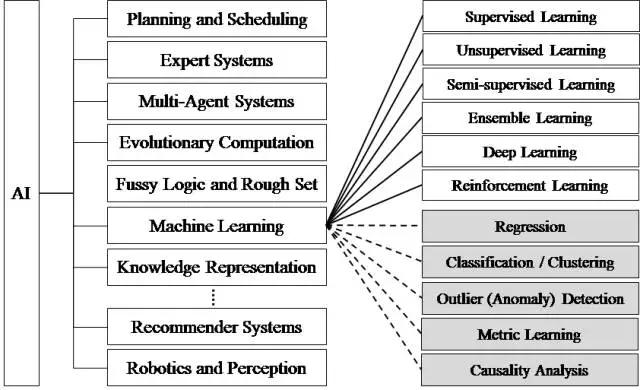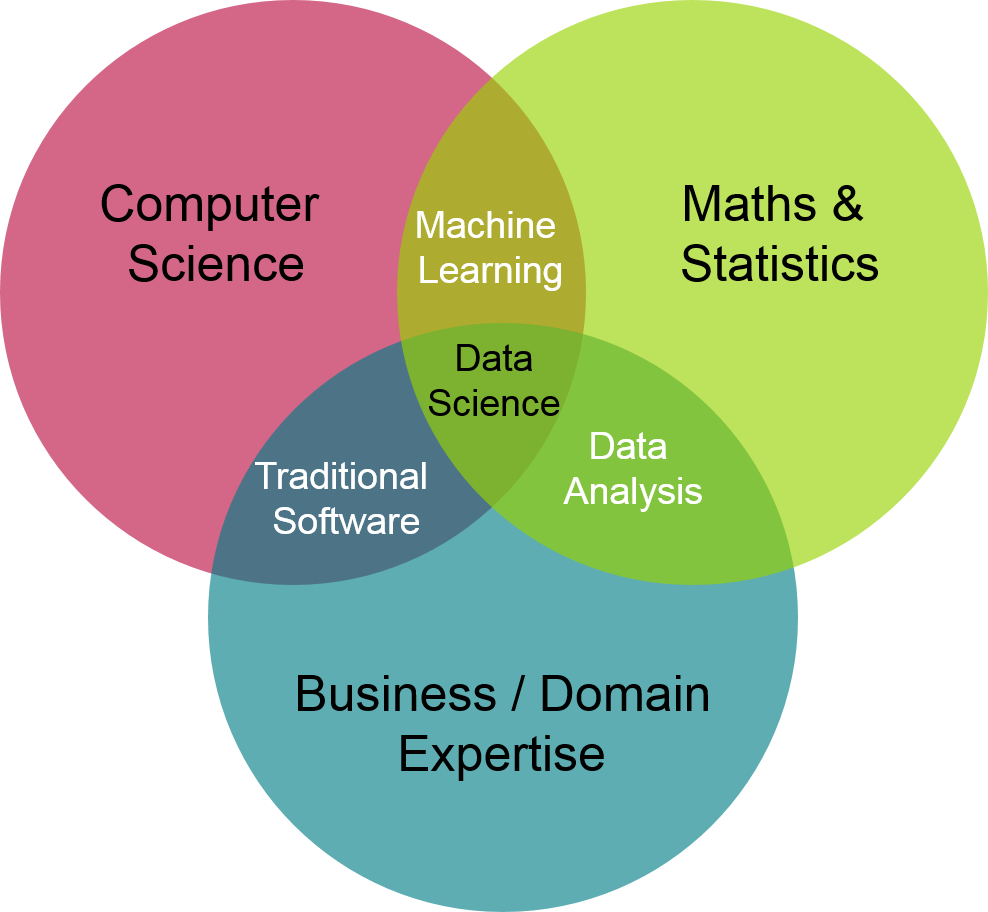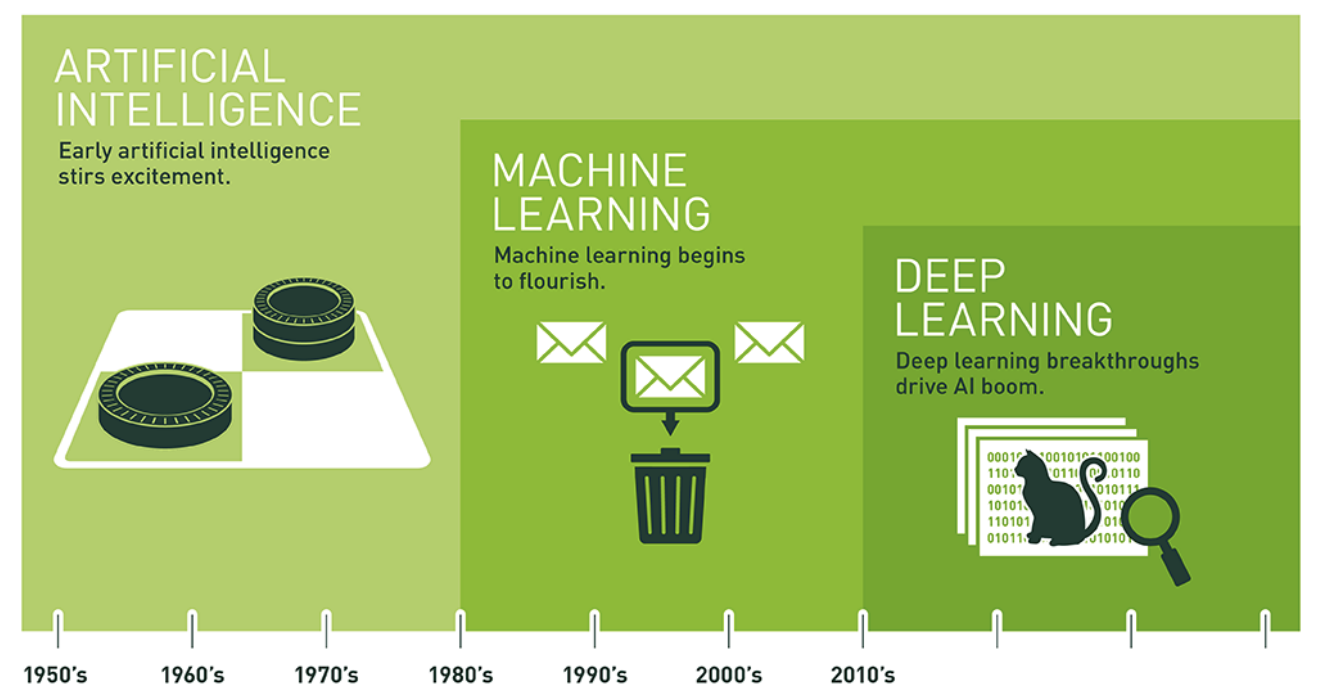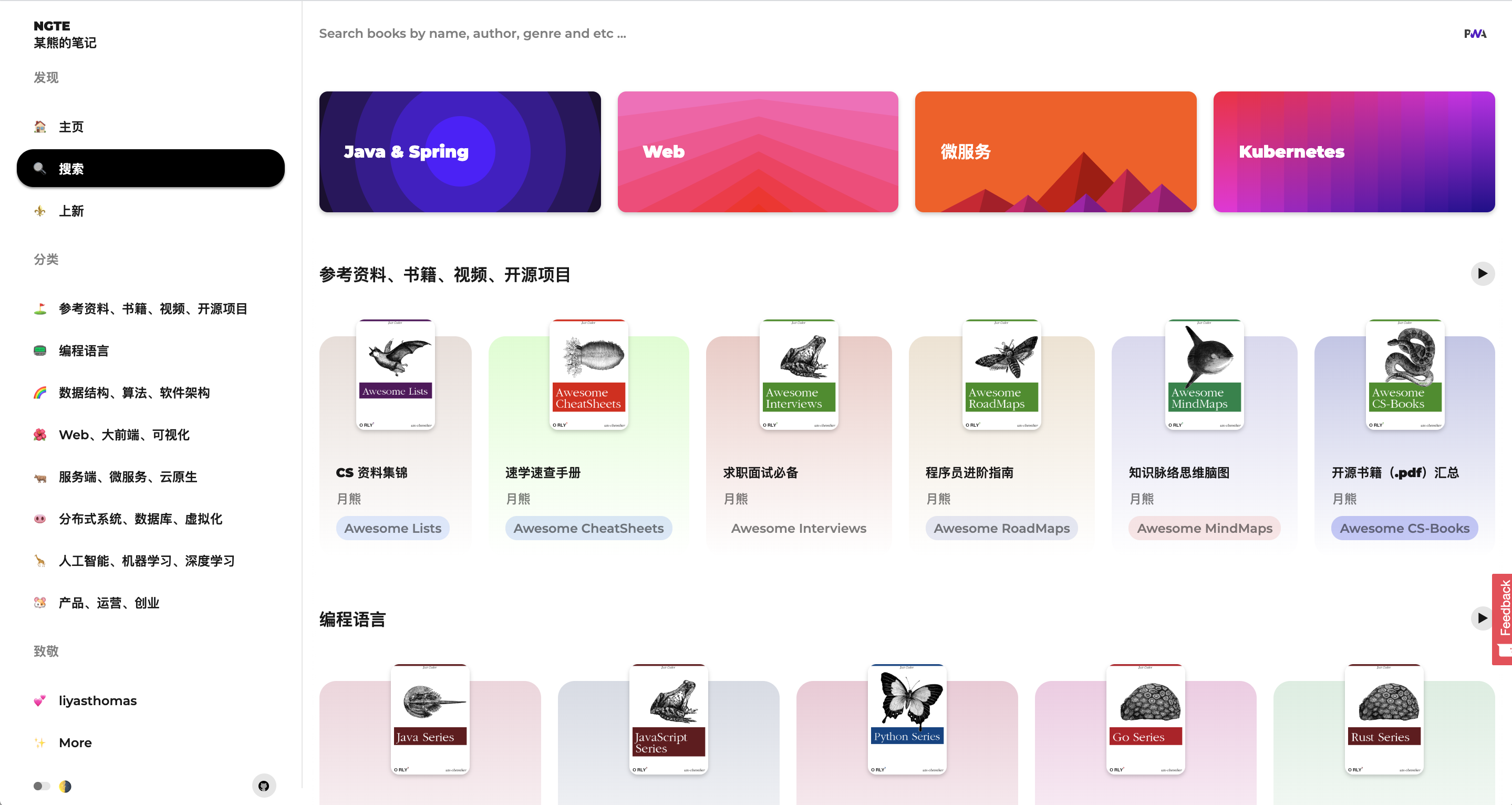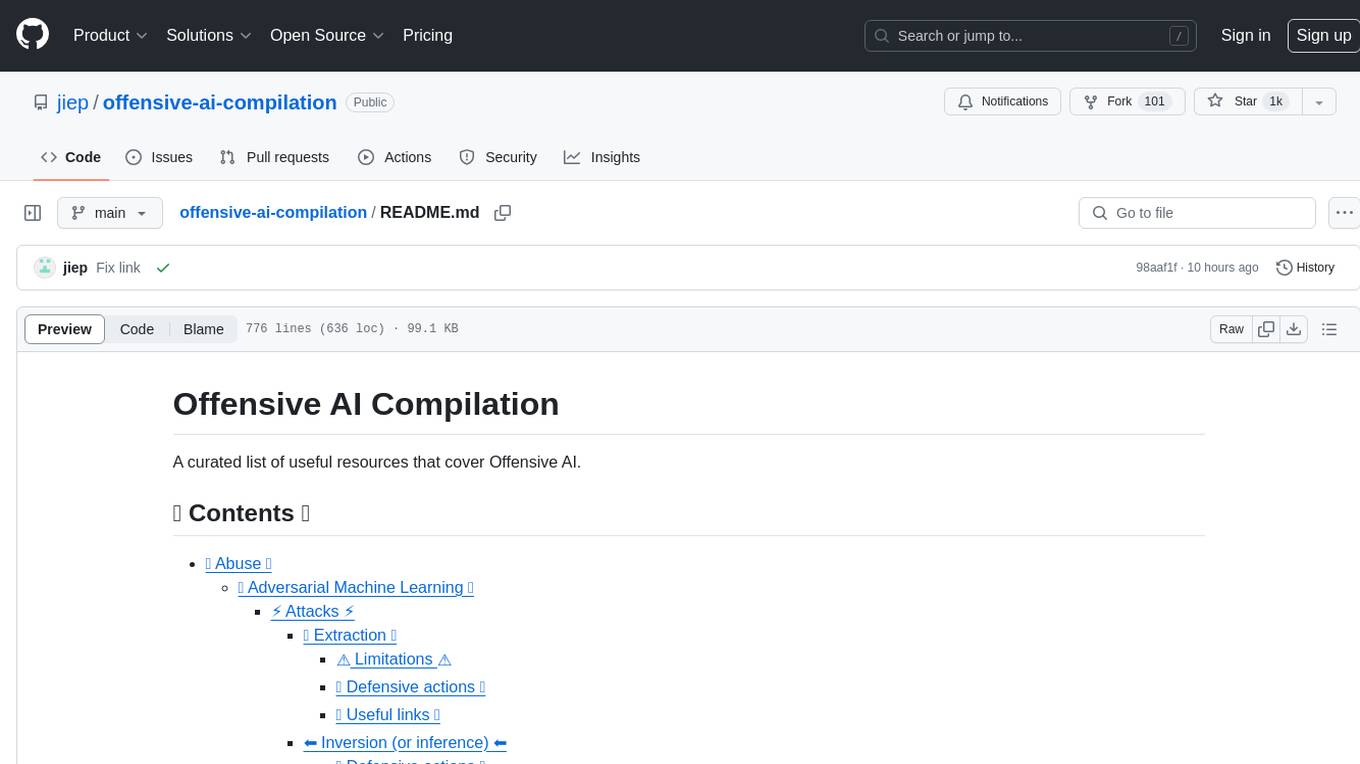
AI-Notes
:books: [.md & .ipynb] Series of Artificial Intelligence & Deep Learning, including Mathematics Fundamentals, Python Practices, NLP Application, etc. 💫 人工智能与深度学习实战,数理统计篇 | 机器学习篇 | 深度学习篇 | 自然语言处理篇 | 工具实践 Scikit & Tensoflow & PyTorch 篇 | 行业应用 & 课程笔记
Stars: 755
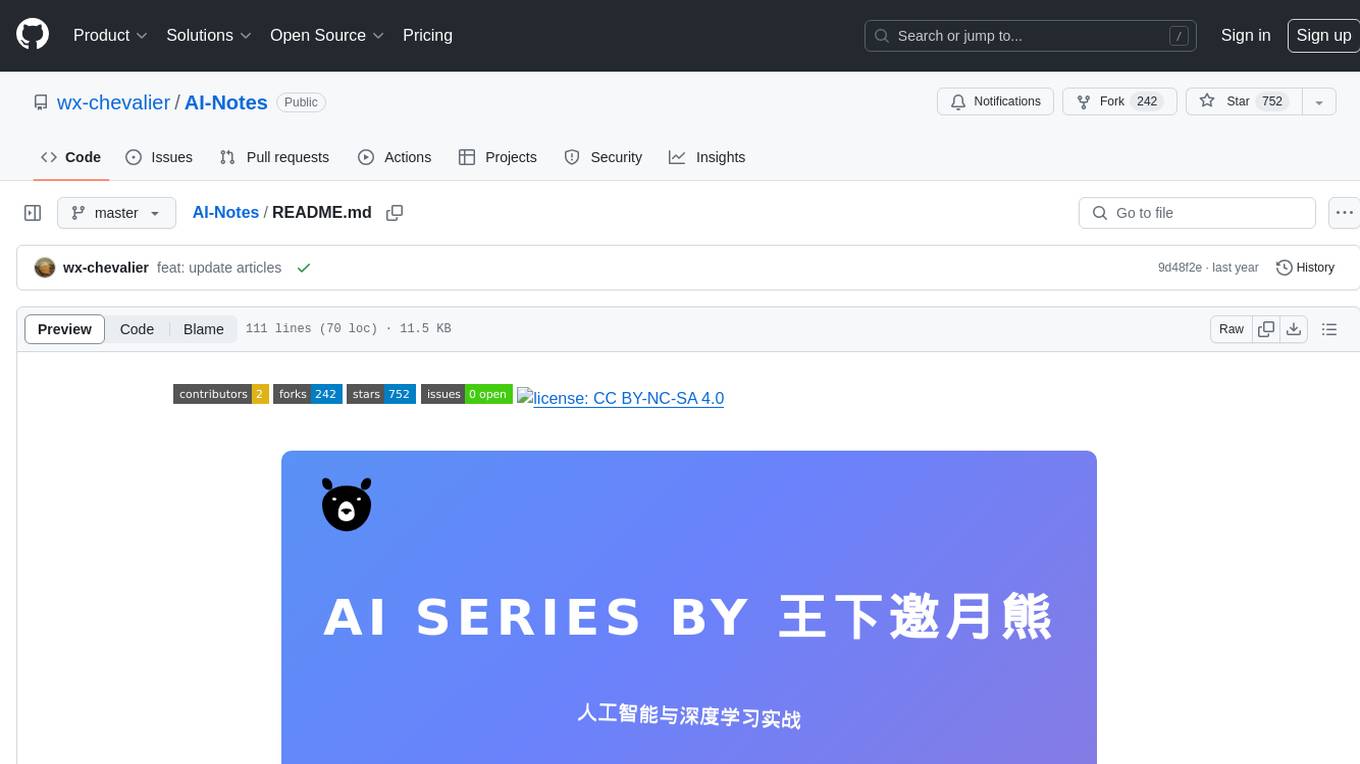
AI-Notes is a repository dedicated to practical applications of artificial intelligence and deep learning. It covers concepts such as data mining, machine learning, natural language processing, and AI. The repository contains Jupyter Notebook examples for hands-on learning and experimentation. It explores the development stages of AI, from narrow artificial intelligence to general artificial intelligence and superintelligence. The content delves into machine learning algorithms, deep learning techniques, and the impact of AI on various industries like autonomous driving and healthcare. The repository aims to provide a comprehensive understanding of AI technologies and their real-world applications.
README:
在本系列中,你可能会接触到数据挖掘、机器学习、深度学习、自然语言处理、人工智能等很多的概念。值得说明的是,鉴于很多的算法实现是以文字结合代码介绍为最佳,因此工具实践篇中的大部分内容是以 Juypter Notebook 的形式放在该仓库中,并且在 Colab 中进行浏览、编辑与实验。
本系列目前分为机器学习、自然语言处理等部分。如果您是新人,建议从机器学习篇开始阅读,也可以在数理统计篇中夯实理论基础。如果想了解更多实践操作,建议阅读深度学习、自然语言处理、工具与工程化(TensorFlow Series)等部分。
1956 年,几个计算机科学家相聚在达特茅斯会议,提出了“人工智能”的概念,梦想着用当时刚刚出现的计算机来构造复杂的、拥有与人类智慧同样本质特性的机器。2012 年以后,得益于数据量的上涨、运算力的提升和机器学习新算法(深度学习)的出现,人工智能开始大爆发。
机器学习是一种实现人工智能的方法,机器学习最基本的做法,是使用算法来解析数据、从中学习,然后对真实世界中的事件做出决策和预测。与传统的为解决特定任务、硬编码的软件程序不同,机器学习是用大量的数据来“训练”,通过各种算法从数据中学习如何完成任务。机器学习直接来源于早期的人工智能领域,传统的模型算法包括决策树、聚类、贝叶斯分类、支持向量机、EM、Adaboost 等等。从任务类型上来分,机器学习算法可以分为监督学习(如分类问题)、无监督学习(如聚类问题)、半监督学习、集成学习和强化学习的等。
-
弱人工智能 Artificial Narrow Intelligence (ANI): 弱人工智能是擅长于单个方面的人工智能。比如有能战胜象棋世界冠军的人工智能,但是它只会下象棋,你要问它怎样更好地在硬盘上储存数据,它就不知道怎么回答你了。
-
强人工智能 Artificial General Intelligence (AGI): 人类级别的人工智能。强人工智能是指在各方面都能和人类比肩的人工智能,人类能干的脑力活它都能干。创造强人工智能比创造弱人工智能难得多,我们现在还做不到。Linda Gottfredson 教授把智能定义为“一种宽泛的心理能力,能够进行思考、计划、解决问题、抽象思维、理解复杂理念、快速学习和从经验中学习等操作。”强人工智能在进行这些操作时应该和人类一样得心应手。
-
超人工智能 Artificial Superintelligence (ASI): 牛津哲学家,知名人工智能思想家 Nick Bostrom 把超级智能定义为“在几乎所有领域都比最聪明的人类大脑都聪明很多,包括科学创新、通识和社交技能。”超人工智能可以是各方面都比人类强一点,也可以是各方面都比人类强万亿倍的。超人工智能也正是为什么人工智能这个话题这么火热的缘故。
传统的机器学习算法在指纹识别、基于 Haar 的人脸检测、基于 HoG 特征的物体检测等领域的应用基本达到了商业化的要求或者特定场景的商业化水平,但每前进一步都异常艰难,直到深度学习算法的出现。
深度学习是一种实现机器学习的技术,深度学习本来并不是一种独立的学习方法,其本身也会用到有监督和无监督的学习方法来训练深度神经网络。最初的深度学习是利用深度神经网络来解决特征表达的一种学习过程。深度神经网络本身并不是一个全新的概念,可大致理解为包含多个隐含层的神经网络结构。为了提高深层神经网络的训练效果,人们对神经元的连接方法和激活函数等方面做出相应的调整。其实有不少想法早年间也曾有过,但由于当时训练数据量不足、计算能力落后,因此最终的效果不尽如人意。深度学习摧枯拉朽般地实现了各种任务,使得似乎所有的机器辅助功能都变为可能。无人驾驶汽车,预防性医疗保健,甚至是更好的电影推荐,都近在眼前,或者即将实现。
-
第一阶段(20 世纪 50 年代中期到 80 年代初期):深耕细作,30 年技术发展为人工智能产业化奠定基础。在 1956 年之前,人工智能就已经开始孕育。神经元模型、图灵测试的提出以及 SNARC 神经网络计算机的发明,为人工智能的诞生奠定了基础。1956 年的达特茅斯会议代表人工智能正式诞生和兴起。此后人工智能快速发展,深度学习模型以及 AlphaGo 增强学习的雏形——感知器均在这个阶段得以发明。随后由于早期的系统适用于更宽的问题选择和更难的问题时效果均不理想,因此美国、英国相继缩减经费支持,人工智能进入低谷。
-
第二阶段(20 世纪 80 年代初期至 21 世纪初期):急功近利,人工智能成功商用但跨越式发展失败。80 年代初期,人工智能逐渐成为产业,第一个成功的商用专家系统 R1 为 DEC 公司每年节约 4000 万美元左右的费用。截止到 20 世纪 80 年代末,几乎一半的“财富 500 强”都在开发或使用“专家系统”。受此鼓励,日本、美国等国家投入巨资开发第 5 代计算机——人工智能计算机。在 90 年代初,IBM、苹果推出的台式机进入普通百姓家庭中,奠定了计算机工业的发展方向。第 5 代计算机由于技术路线明显背离计算机工业的发展方向,项目宣告失败,人工智能再一次进入低谷。尽管如此,浅层学习如支持向量机、Boosting 和最大熵方法等在 90 年代得到了广泛应用。
-
第三阶段(21 世纪初期至今):量变产生质变,人工智能有望实现规模化应用。摩尔定律和云计算带来的计算能力的提升,以及互联网和大数据广泛应用带来的海量数据量的积累,使得深度学习算法在各行业得到快速应用,并推动语音识别、图像识别等技术快速发展并迅速产业化。2006 年,Geoffrey Hinton 和他的学生在《Science》上提出基于深度信念网络(Deep Belief Networks,DBN)可使用非监督学习的训练算法,使得深度学习在学术界持续升温。2012 年,DNN 技术在图像识别领域的应用使得 Hinton 的学生在 ImageNet 评测中取得了非常好的成绩。深度学习算法的应用使得语音识别、图像识别技术取得了突破性进展,围绕语音、图像、机器人、自动驾驶等人工智能技术的创新创业大量涌现,人工智能迅速进入发展热潮。
不同的模型、策略、算法的搭配,不断地推动着人工智能的发展,其又可以被分为三个阶段:计算智能、感知智能和认知智能。
-
第一阶段的计算智能即快速计算和记忆存储,像机器人战胜围棋大师,靠的就是超强的记忆能力和运算速度。人脑的逻辑能力再强大,也敌不过人工智能每天和自己下几百盘棋,通过强大的计算能力对十几步后的结果做出预测,从这一角度来说,人工智能多次战败世界级围棋选手,足以证明这一领域发展之成熟。
-
第二阶段的感知智能,即让机器拥有视觉、听觉、触觉等感知能力。自动驾驶汽车做的就是这一方面的研究,使机器通过传感器对周围的环境进行感知和处理,从而实现自动驾驶。感知智能方面的技术目前发展比较成熟的领域有语音识别和图像识别,比如做安全领域人脸识别技术的 Face++,以成熟的计算机视觉技术深耕电商、短视频等领域的 Yi+,能够对多种语言进行准确识别翻译的科大讯飞等。
-
第三阶段的认知智能就是让机器拥有自己的认知,能理解会思考。认知智能是目前机器和人差距最大的领域,因为这不仅涉及逻辑和技术,还涉及心理学、哲学和语言学等学科。
笔者所有文章遵循知识共享 署名-非商业性使用-禁止演绎 4.0 国际许可协议,欢迎转载,尊重版权。
您还可以前往 NGTE Books 主页浏览包含知识体系、编程语言、软件工程、模式与架构、Web 与大前端、服务端开发实践与工程架构、分布式基础架构、人工智能与深度学习、产品运营与创业等多类目的书籍列表:
For Tasks:
Click tags to check more tools for each tasksFor Jobs:
Alternative AI tools for AI-Notes
Similar Open Source Tools

AI-Notes
AI-Notes is a repository dedicated to practical applications of artificial intelligence and deep learning. It covers concepts such as data mining, machine learning, natural language processing, and AI. The repository contains Jupyter Notebook examples for hands-on learning and experimentation. It explores the development stages of AI, from narrow artificial intelligence to general artificial intelligence and superintelligence. The content delves into machine learning algorithms, deep learning techniques, and the impact of AI on various industries like autonomous driving and healthcare. The repository aims to provide a comprehensive understanding of AI technologies and their real-world applications.
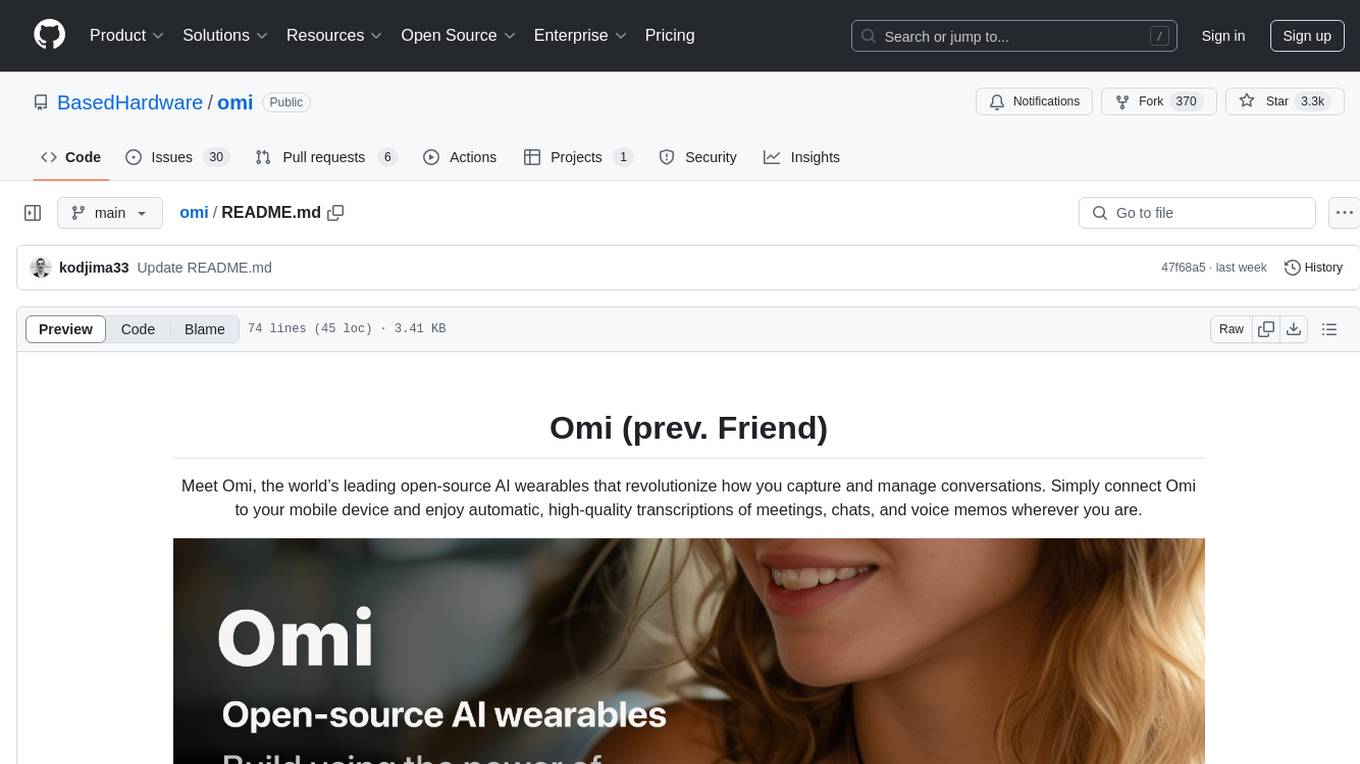
omi
Omi is an open-source AI wearable that provides automatic, high-quality transcriptions of meetings, chats, and voice memos. It revolutionizes how conversations are captured and managed by connecting to mobile devices. The tool offers features for seamless documentation and integration with third-party services.
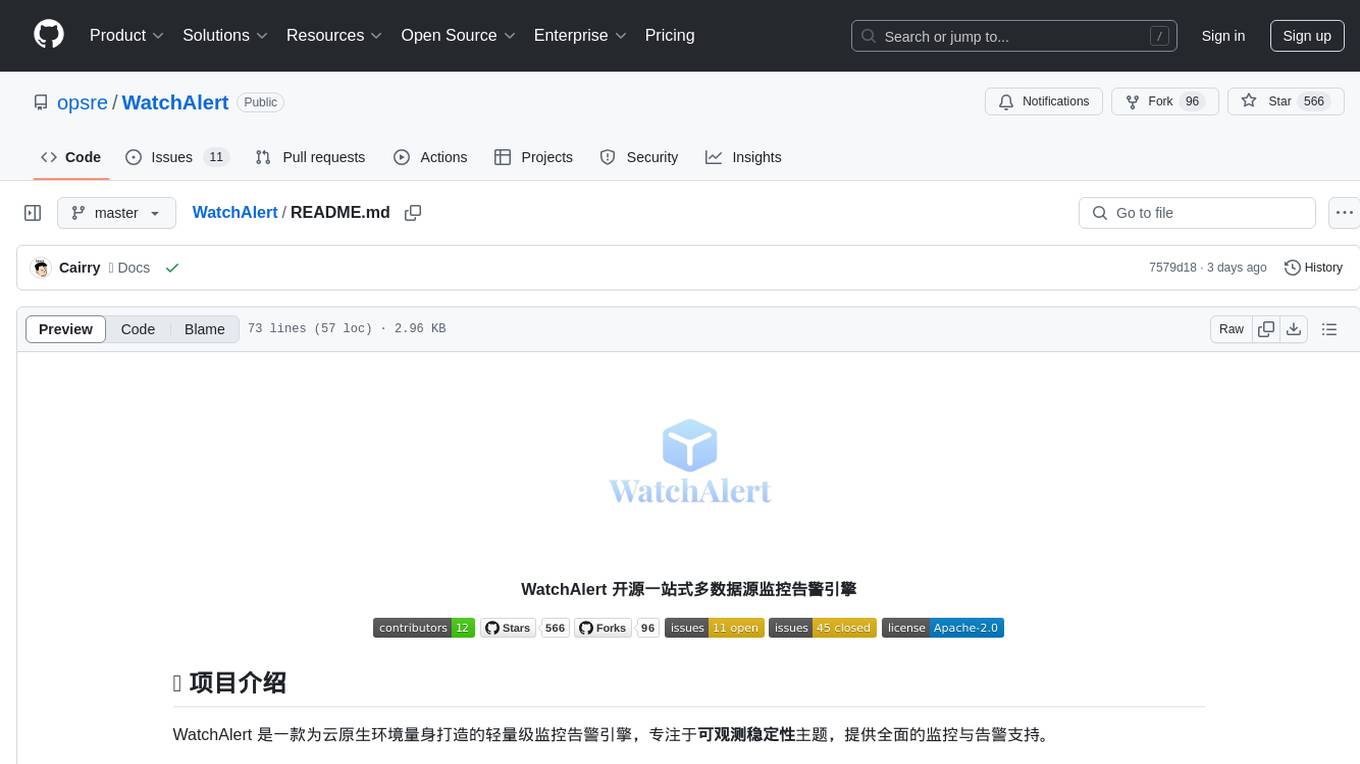
WatchAlert
WatchAlert is a lightweight monitoring and alerting engine tailored for cloud-native environments, focusing on observability and stability themes. It provides comprehensive monitoring and alerting support, including AI-powered alert analysis for efficient troubleshooting. WatchAlert integrates with various data sources such as Prometheus, VictoriaMetrics, Loki, Elasticsearch, AliCloud SLS, Jaeger, Kubernetes, and different network protocols for monitoring and supports alert notifications via multiple channels like Feishu, DingTalk, WeChat Work, email, and custom hooks. It is optimized for cloud-native environments, easy to use, offers flexible alert rule configurations, and specializes in stability scenarios to help users quickly identify and resolve issues, providing a reliable monitoring and alerting solution to enhance operational efficiency and reduce maintenance costs.
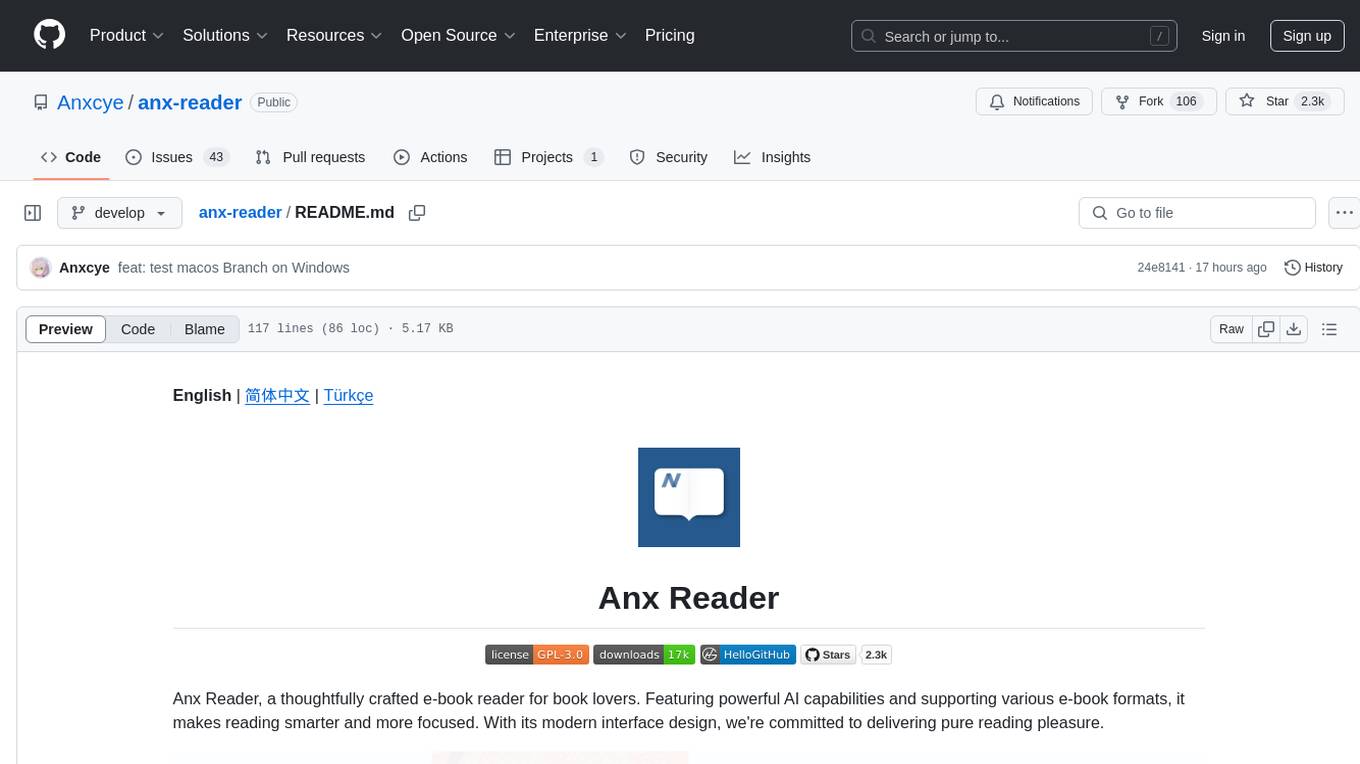
anx-reader
Anx Reader is a meticulously designed e-book reader tailored for book enthusiasts. It boasts powerful AI functionalities and supports various e-book formats, enhancing the reading experience. With a modern interface, the tool aims to provide a seamless and enjoyable reading journey. It offers rich format support, seamless sync across devices, smart AI assistance, personalized reading experiences, professional reading analytics, a powerful note system, practical tools, and cross-platform support. The tool is continuously evolving with features like UI adaptation for tablets, page-turning animation, TTS voice reading, reading fonts, translation, and more in the pipeline.
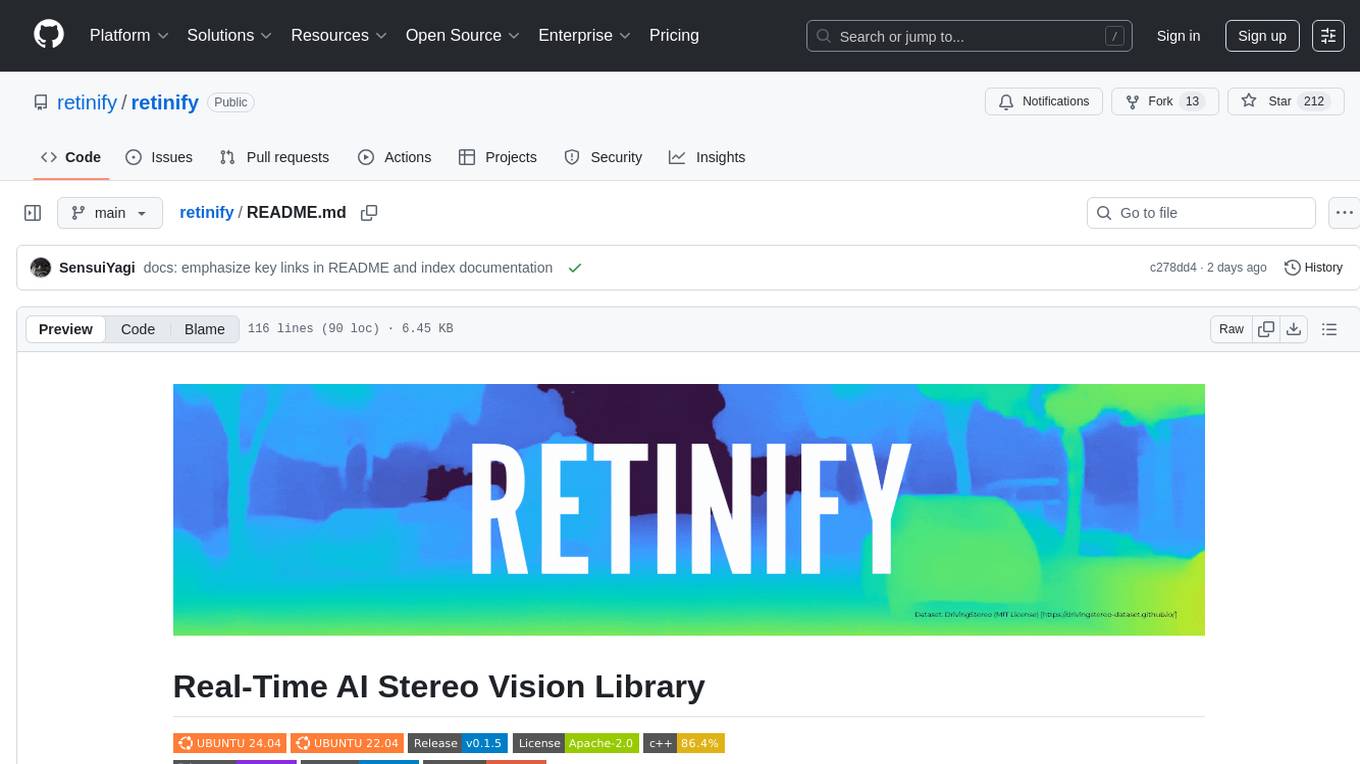
retinify
Retinify is an advanced AI-powered stereo vision library designed for robotics, enabling real-time, high-precision 3D perception by leveraging GPU and NPU acceleration. It is open source under Apache-2.0 license, offers high precision 3D mapping and object recognition, runs computations on GPU for fast performance, accepts stereo images from any rectified camera setup, is cost-efficient using minimal hardware, and has minimal dependencies on CUDA Toolkit, cuDNN, and TensorRT. The tool provides a pipeline for stereo matching and supports various image data types independently of OpenCV.
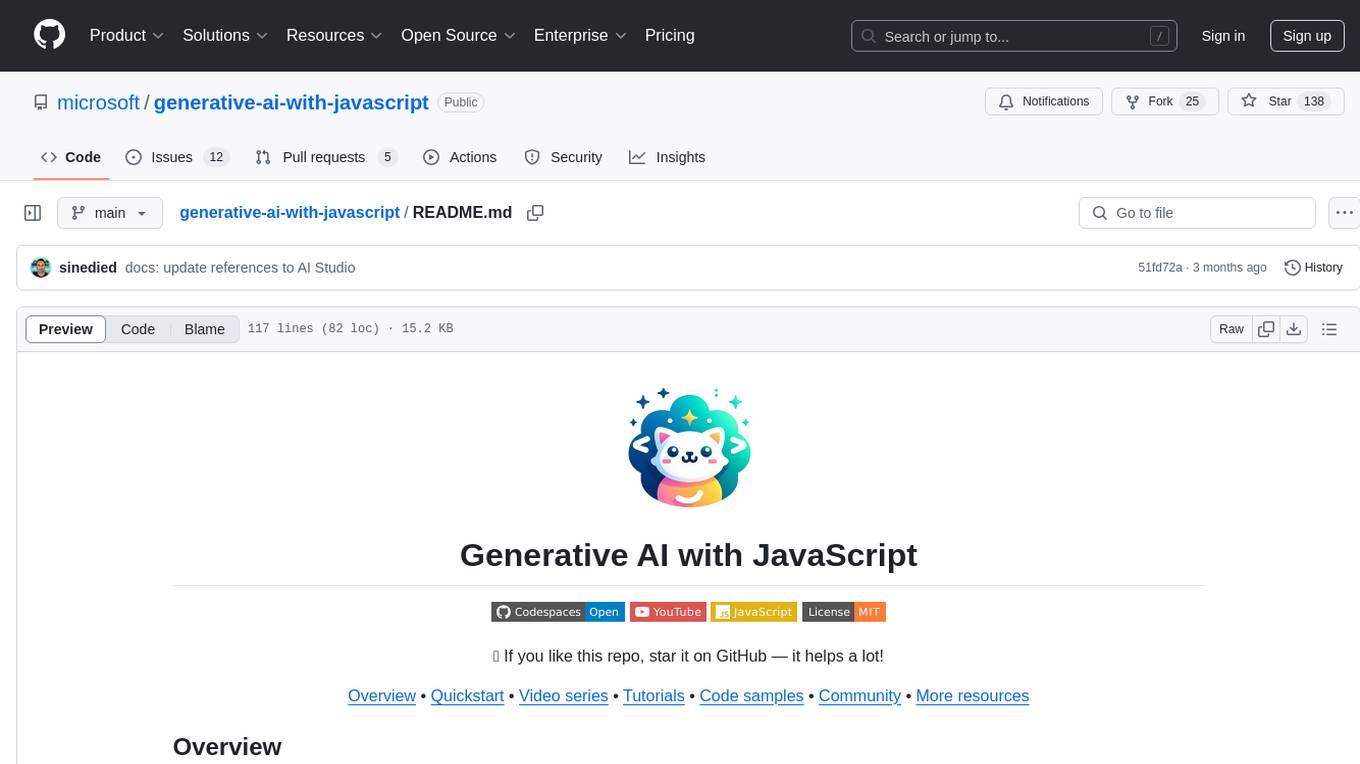
generative-ai-with-javascript
The 'Generative AI with JavaScript' repository is a comprehensive resource hub for JavaScript developers interested in delving into the world of Generative AI. It provides code samples, tutorials, and resources from a video series, offering best practices and tips to enhance AI skills. The repository covers the basics of generative AI, guides on building AI applications using JavaScript, from local development to deployment on Azure, and scaling AI models. It is a living repository with continuous updates, making it a valuable resource for both beginners and experienced developers looking to explore AI with JavaScript.
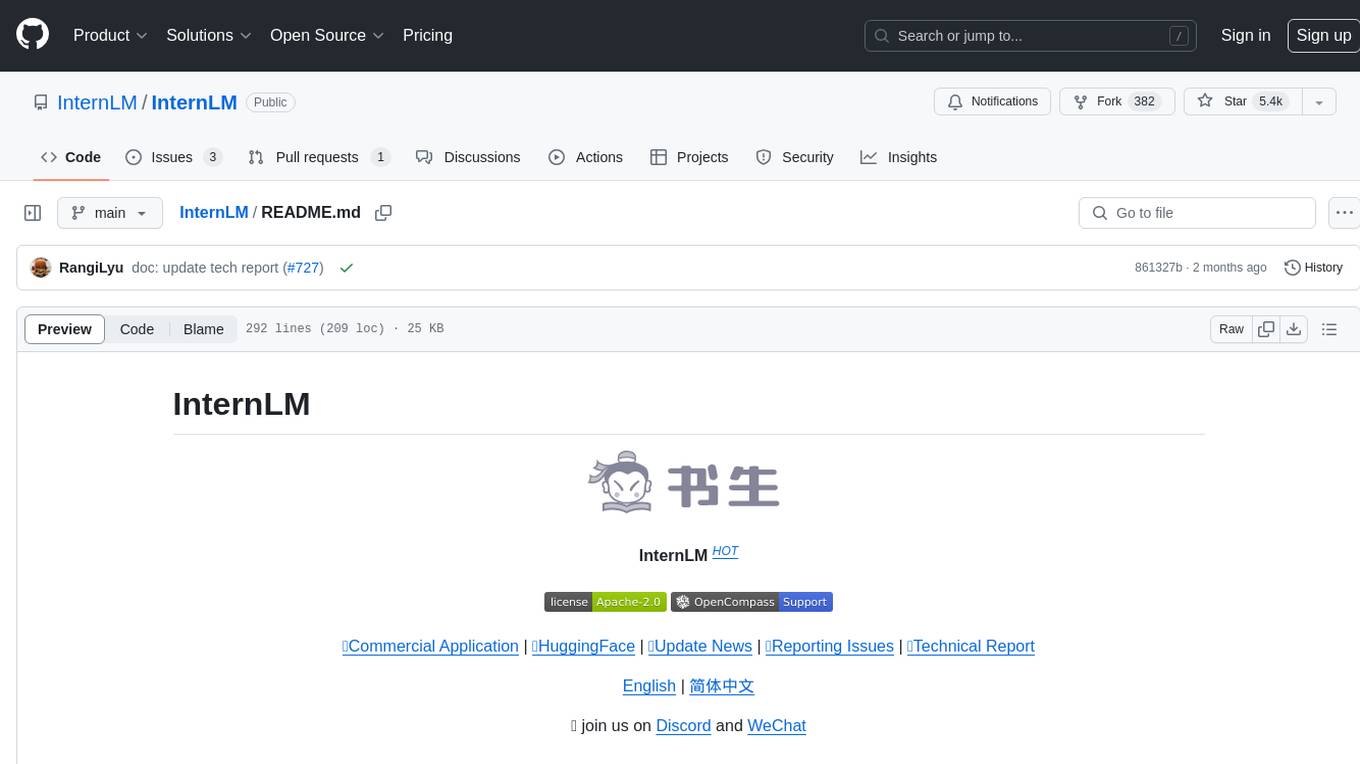
InternLM
InternLM is a powerful language model series with features such as 200K context window for long-context tasks, outstanding comprehensive performance in reasoning, math, code, chat experience, instruction following, and creative writing, code interpreter & data analysis capabilities, and stronger tool utilization capabilities. It offers models in sizes of 7B and 20B, suitable for research and complex scenarios. The models are recommended for various applications and exhibit better performance than previous generations. InternLM models may match or surpass other open-source models like ChatGPT. The tool has been evaluated on various datasets and has shown superior performance in multiple tasks. It requires Python >= 3.8, PyTorch >= 1.12.0, and Transformers >= 4.34 for usage. InternLM can be used for tasks like chat, agent applications, fine-tuning, deployment, and long-context inference.

tt-metal
TT-NN is a python & C++ Neural Network OP library. It provides a low-level programming model, TT-Metalium, enabling kernel development for Tenstorrent hardware.
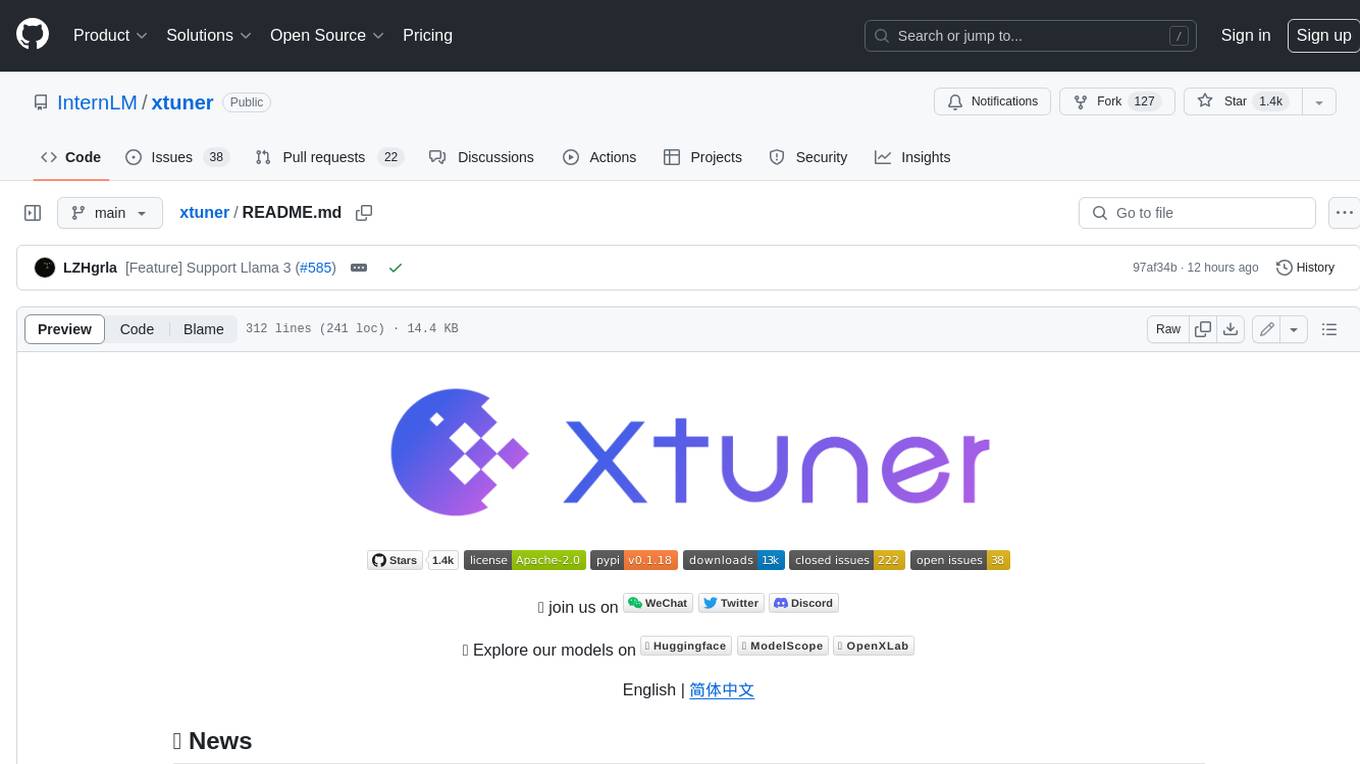
xtuner
XTuner is an efficient, flexible, and full-featured toolkit for fine-tuning large models. It supports various LLMs (InternLM, Mixtral-8x7B, Llama 2, ChatGLM, Qwen, Baichuan, ...), VLMs (LLaVA), and various training algorithms (QLoRA, LoRA, full-parameter fine-tune). XTuner also provides tools for chatting with pretrained / fine-tuned LLMs and deploying fine-tuned LLMs with any other framework, such as LMDeploy.

TTS-WebUI
TTS WebUI is a comprehensive tool for text-to-speech synthesis, audio/music generation, and audio conversion. It offers a user-friendly interface for various AI projects related to voice and audio processing. The tool provides a range of models and extensions for different tasks, along with integrations like Silly Tavern and OpenWebUI. With support for Docker setup and compatibility with Linux and Windows, TTS WebUI aims to facilitate creative and responsible use of AI technologies in a user-friendly manner.
helicone
Helicone is an open-source observability platform designed for Language Learning Models (LLMs). It logs requests to OpenAI in a user-friendly UI, offers caching, rate limits, and retries, tracks costs and latencies, provides a playground for iterating on prompts and chat conversations, supports collaboration, and will soon have APIs for feedback and evaluation. The platform is deployed on Cloudflare and consists of services like Web (NextJs), Worker (Cloudflare Workers), Jawn (Express), Supabase, and ClickHouse. Users can interact with Helicone locally by setting up the required services and environment variables. The platform encourages contributions and provides resources for learning, documentation, and integrations.
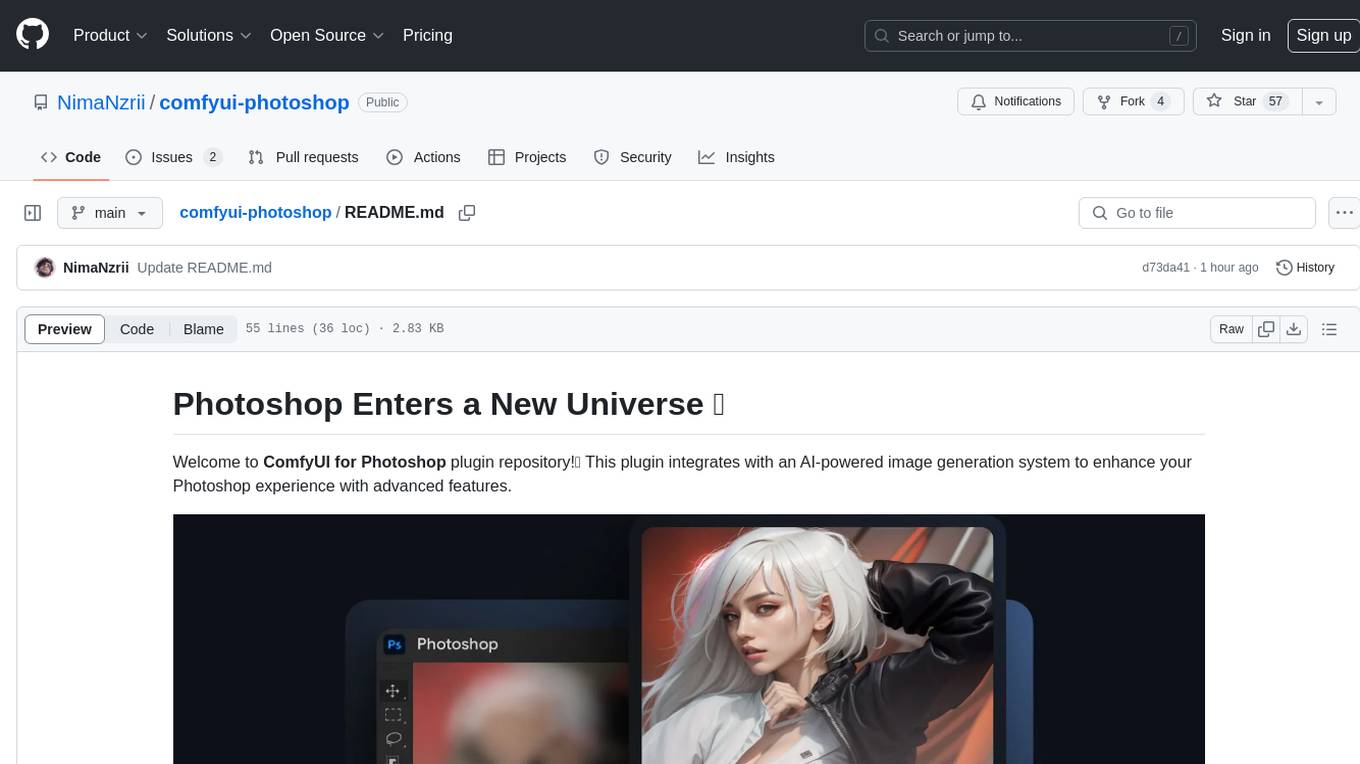
comfyui-photoshop
ComfyUI for Photoshop is a plugin that integrates with an AI-powered image generation system to enhance the Photoshop experience with features like unlimited generative fill, customizable back-end, AI-powered artistry, and one-click transformation. The plugin requires a minimum of 6GB graphics memory and 12GB RAM. Users can install the plugin and set up the ComfyUI workflow using provided links and files. Additionally, specific files like Check points, Loras, and Detailer Lora are required for different functionalities. Support and contributions are encouraged through GitHub.
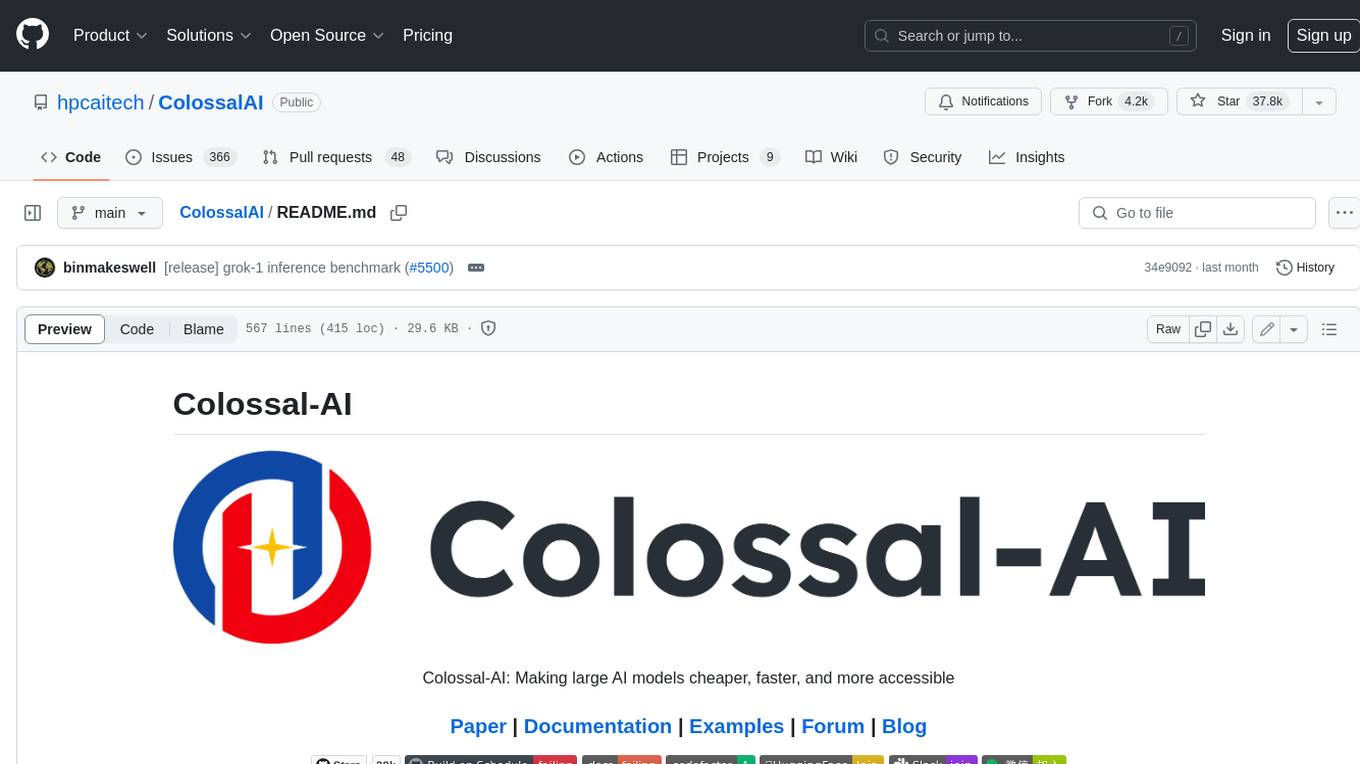
ColossalAI
Colossal-AI is a deep learning system for large-scale parallel training. It provides a unified interface to scale sequential code of model training to distributed environments. Colossal-AI supports parallel training methods such as data, pipeline, tensor, and sequence parallelism and is integrated with heterogeneous training and zero redundancy optimizer.
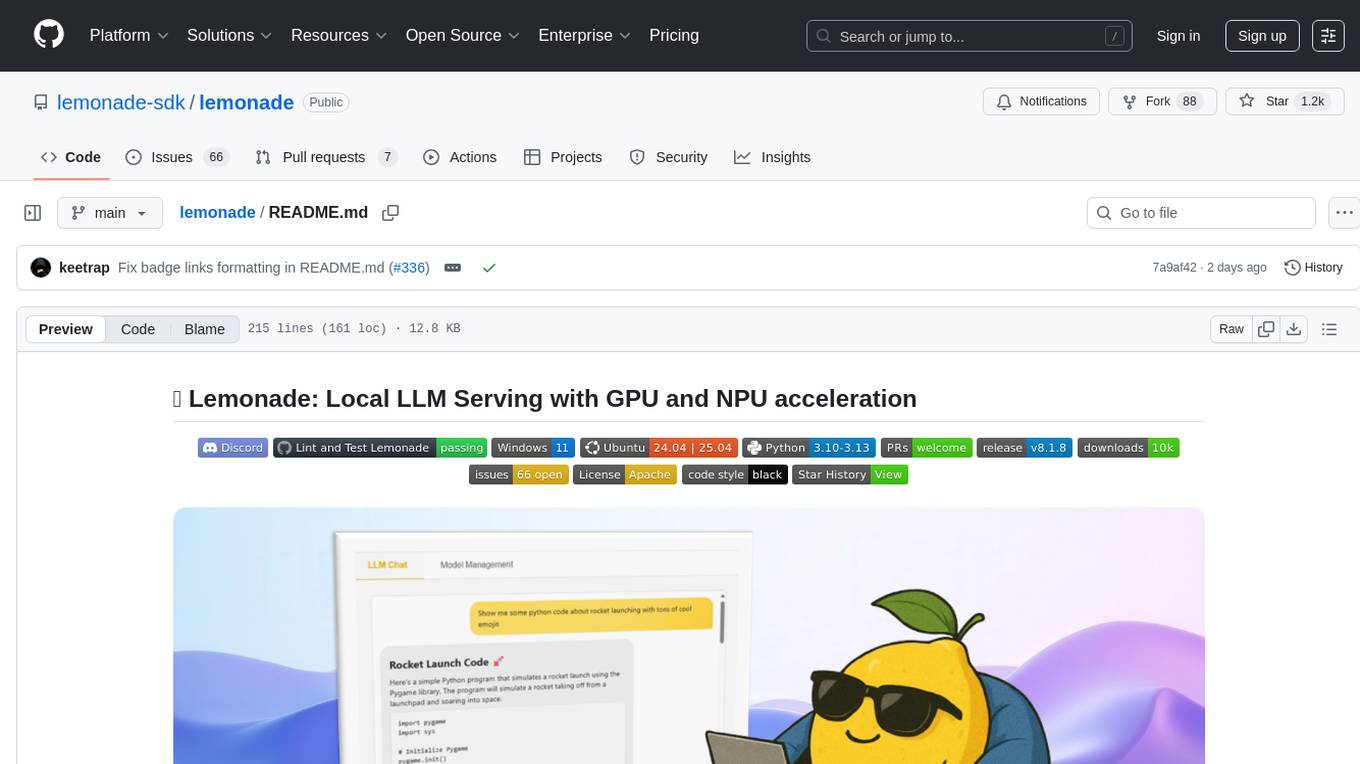
lemonade
Lemonade is a tool that helps users run local Large Language Models (LLMs) with high performance by configuring state-of-the-art inference engines for their Neural Processing Units (NPUs) and Graphics Processing Units (GPUs). It is used by startups, research teams, and large companies to run LLMs efficiently. Lemonade provides a high-level Python API for direct integration of LLMs into Python applications and a CLI for mixing and matching LLMs with various features like prompting templates, accuracy testing, performance benchmarking, and memory profiling. The tool supports both GGUF and ONNX models and allows importing custom models from Hugging Face using the Model Manager. Lemonade is designed to be easy to use and switch between different configurations at runtime, making it a versatile tool for running LLMs locally.
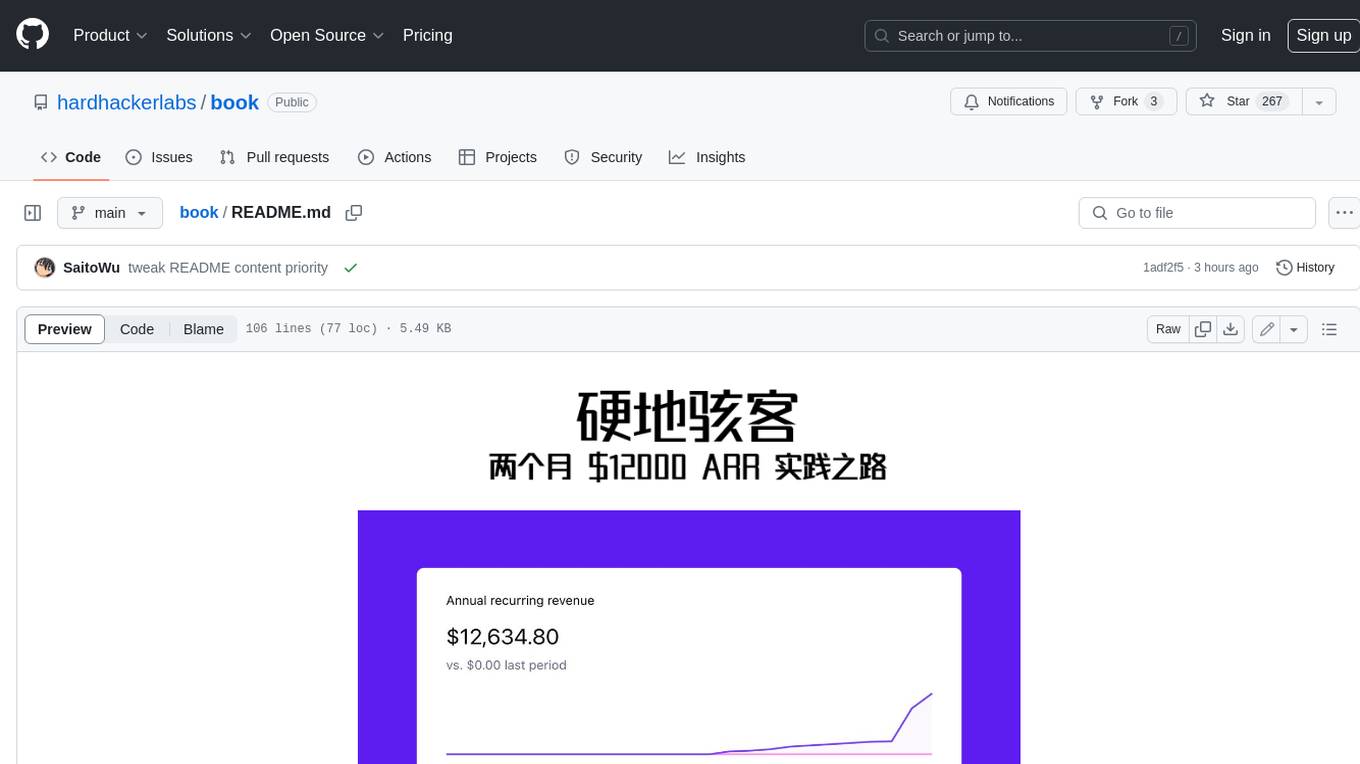
book
Podwise is an AI knowledge management app designed specifically for podcast listeners. With the Podwise platform, you only need to follow your favorite podcasts, such as "Hardcore Hackers". When a program is released, Podwise will use AI to transcribe, extract, summarize, and analyze the podcast content, helping you to break down the hard-core podcast knowledge. At the same time, it is connected to platforms such as Notion, Obsidian, Logseq, and Readwise, embedded in your knowledge management workflow, and integrated with content from other channels including news, newsletters, and blogs, helping you to improve your second brain 🧠.
For similar tasks

Azure-Analytics-and-AI-Engagement
The Azure-Analytics-and-AI-Engagement repository provides packaged Industry Scenario DREAM Demos with ARM templates (Containing a demo web application, Power BI reports, Synapse resources, AML Notebooks etc.) that can be deployed in a customer’s subscription using the CAPE tool within a matter of few hours. Partners can also deploy DREAM Demos in their own subscriptions using DPoC.
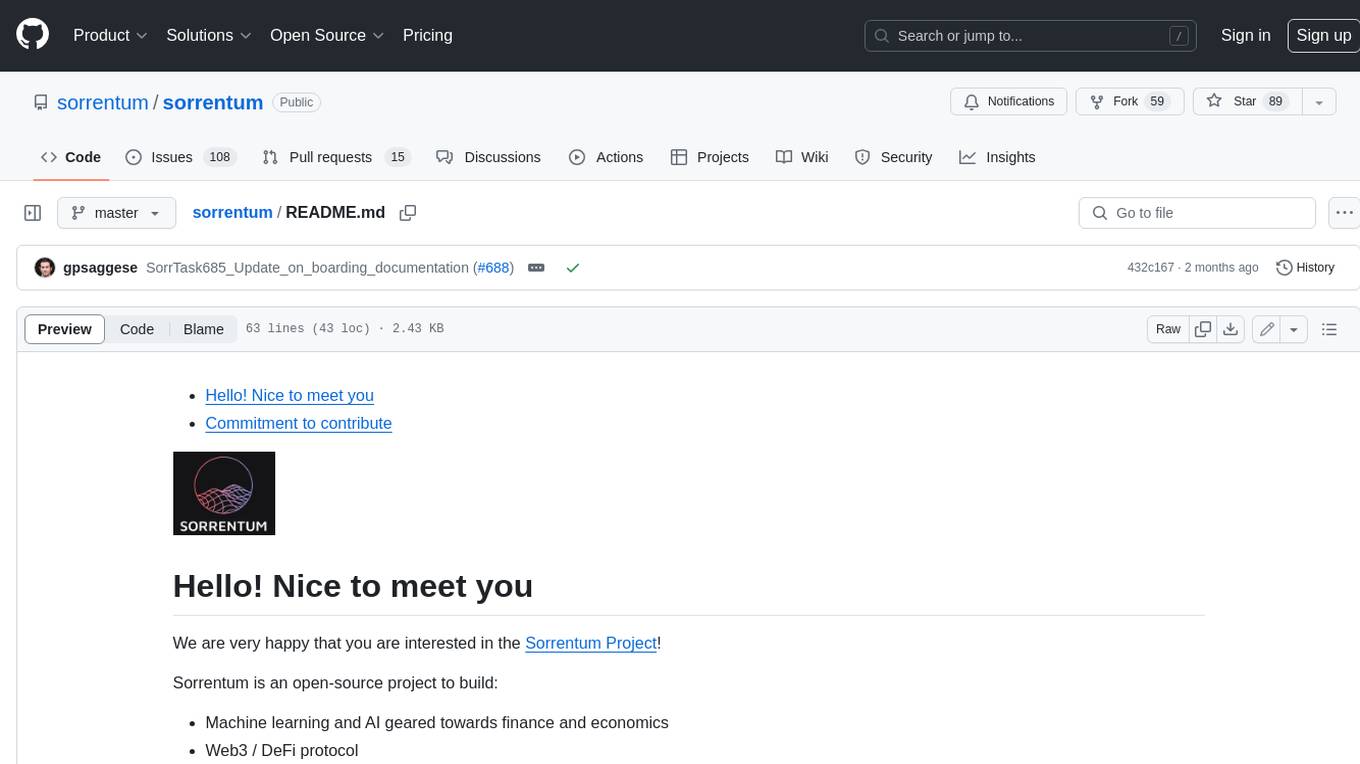
sorrentum
Sorrentum is an open-source project that aims to combine open-source development, startups, and brilliant students to build machine learning, AI, and Web3 / DeFi protocols geared towards finance and economics. The project provides opportunities for internships, research assistantships, and development grants, as well as the chance to work on cutting-edge problems, learn about startups, write academic papers, and get internships and full-time positions at companies working on Sorrentum applications.

tidb
TiDB is an open-source distributed SQL database that supports Hybrid Transactional and Analytical Processing (HTAP) workloads. It is MySQL compatible and features horizontal scalability, strong consistency, and high availability.

zep-python
Zep is an open-source platform for building and deploying large language model (LLM) applications. It provides a suite of tools and services that make it easy to integrate LLMs into your applications, including chat history memory, embedding, vector search, and data enrichment. Zep is designed to be scalable, reliable, and easy to use, making it a great choice for developers who want to build LLM-powered applications quickly and easily.

telemetry-airflow
This repository codifies the Airflow cluster that is deployed at workflow.telemetry.mozilla.org (behind SSO) and commonly referred to as "WTMO" or simply "Airflow". Some links relevant to users and developers of WTMO: * The `dags` directory in this repository contains some custom DAG definitions * Many of the DAGs registered with WTMO don't live in this repository, but are instead generated from ETL task definitions in bigquery-etl * The Data SRE team maintains a WTMO Developer Guide (behind SSO)
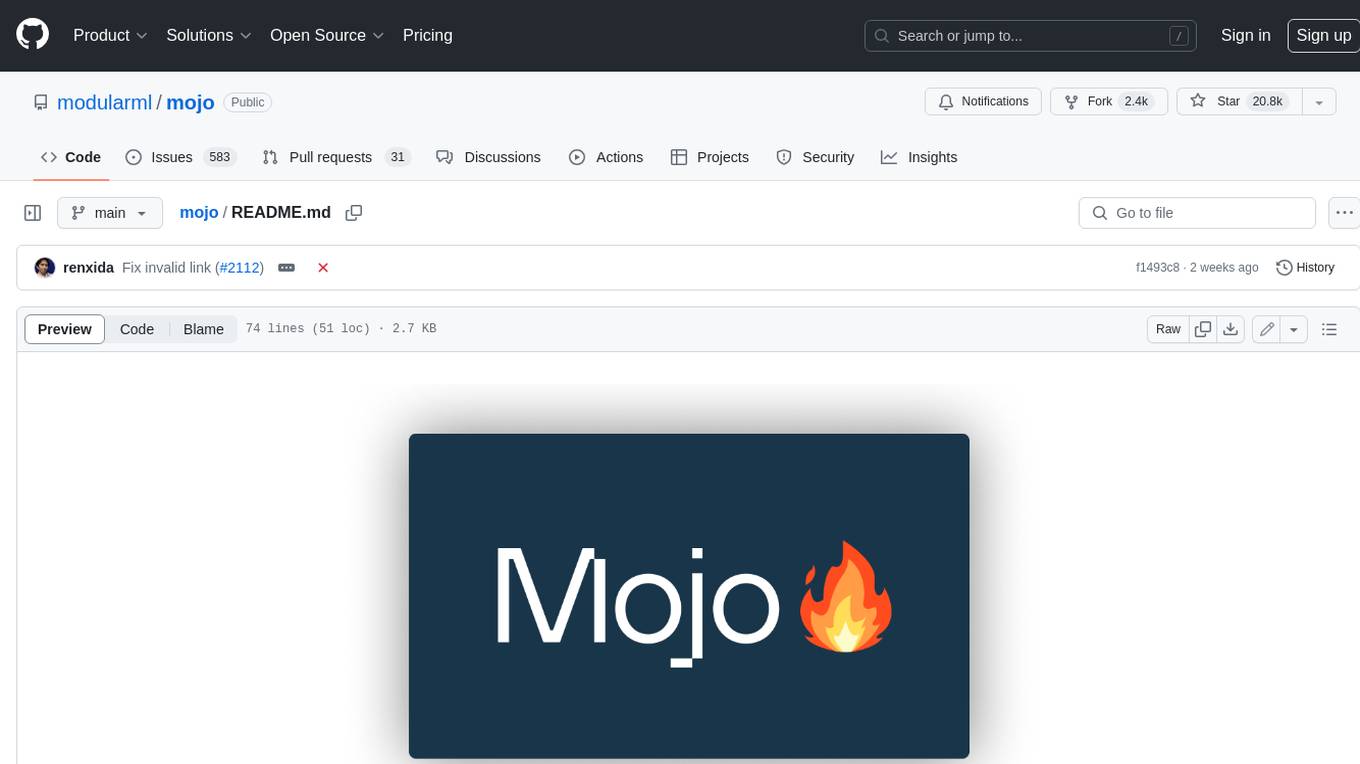
mojo
Mojo is a new programming language that bridges the gap between research and production by combining Python syntax and ecosystem with systems programming and metaprogramming features. Mojo is still young, but it is designed to become a superset of Python over time.
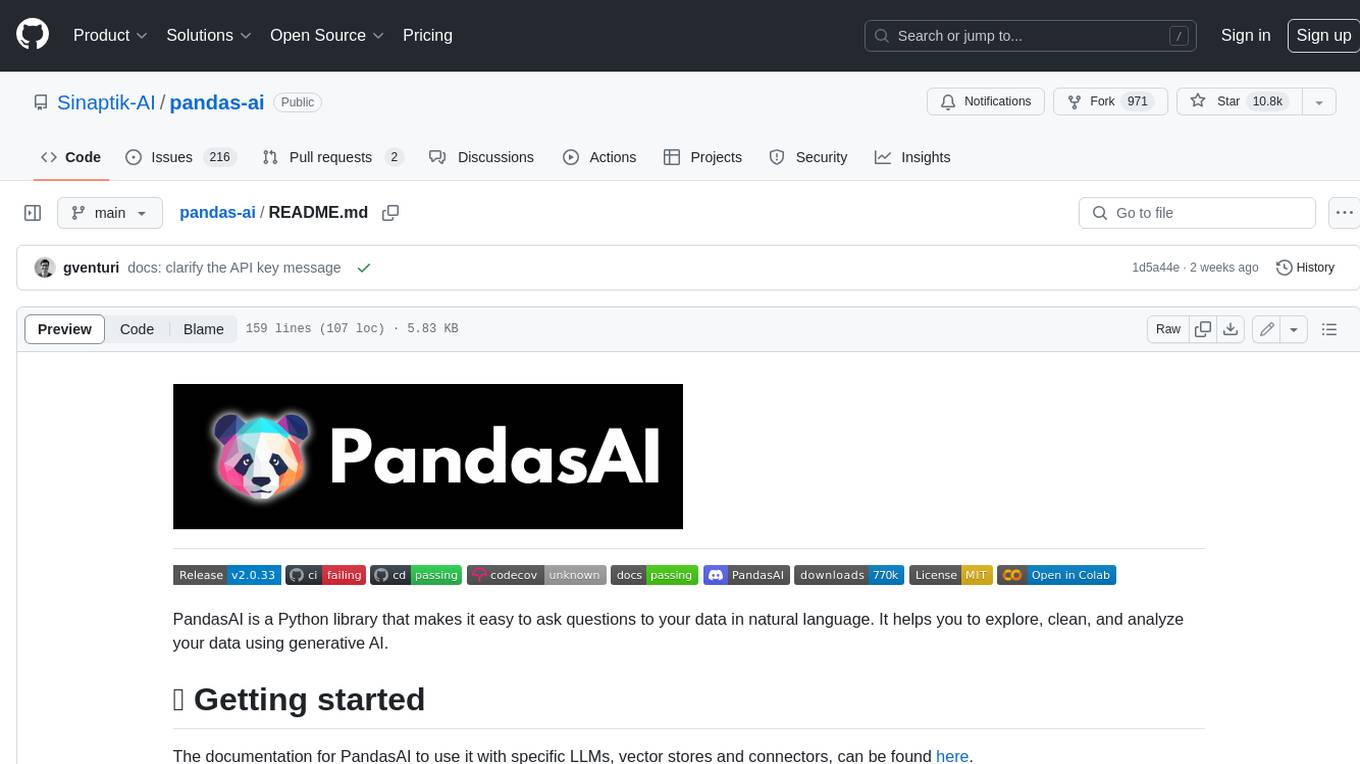
pandas-ai
PandasAI is a Python library that makes it easy to ask questions to your data in natural language. It helps you to explore, clean, and analyze your data using generative AI.

databend
Databend is an open-source cloud data warehouse that serves as a cost-effective alternative to Snowflake. With its focus on fast query execution and data ingestion, it's designed for complex analysis of the world's largest datasets.
For similar jobs
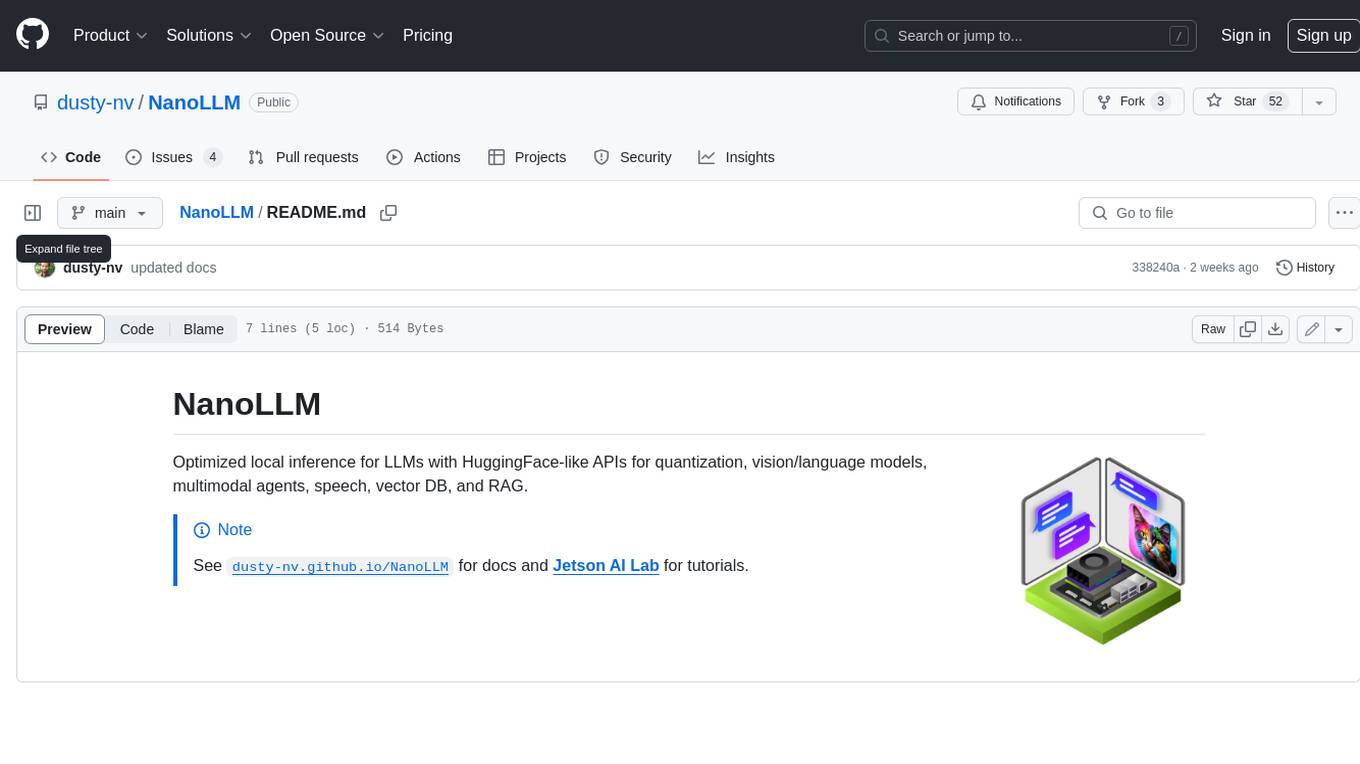
NanoLLM
NanoLLM is a tool designed for optimized local inference for Large Language Models (LLMs) using HuggingFace-like APIs. It supports quantization, vision/language models, multimodal agents, speech, vector DB, and RAG. The tool aims to provide efficient and effective processing for LLMs on local devices, enhancing performance and usability for various AI applications.
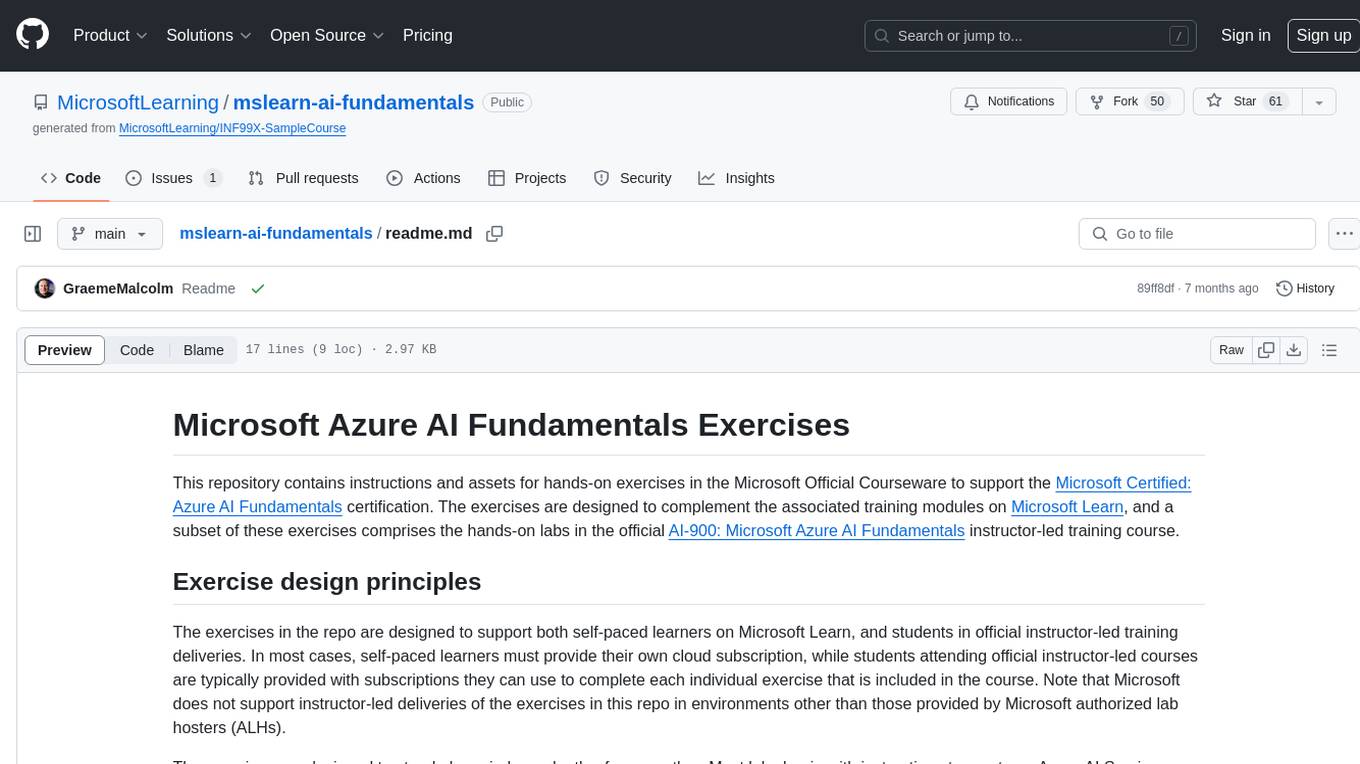
mslearn-ai-fundamentals
This repository contains materials for the Microsoft Learn AI Fundamentals module. It covers the basics of artificial intelligence, machine learning, and data science. The content includes hands-on labs, interactive learning modules, and assessments to help learners understand key concepts and techniques in AI. Whether you are new to AI or looking to expand your knowledge, this module provides a comprehensive introduction to the fundamentals of AI.

awesome-ai-tools
Awesome AI Tools is a curated list of popular tools and resources for artificial intelligence enthusiasts. It includes a wide range of tools such as machine learning libraries, deep learning frameworks, data visualization tools, and natural language processing resources. Whether you are a beginner or an experienced AI practitioner, this repository aims to provide you with a comprehensive collection of tools to enhance your AI projects and research. Explore the list to discover new tools, stay updated with the latest advancements in AI technology, and find the right resources to support your AI endeavors.
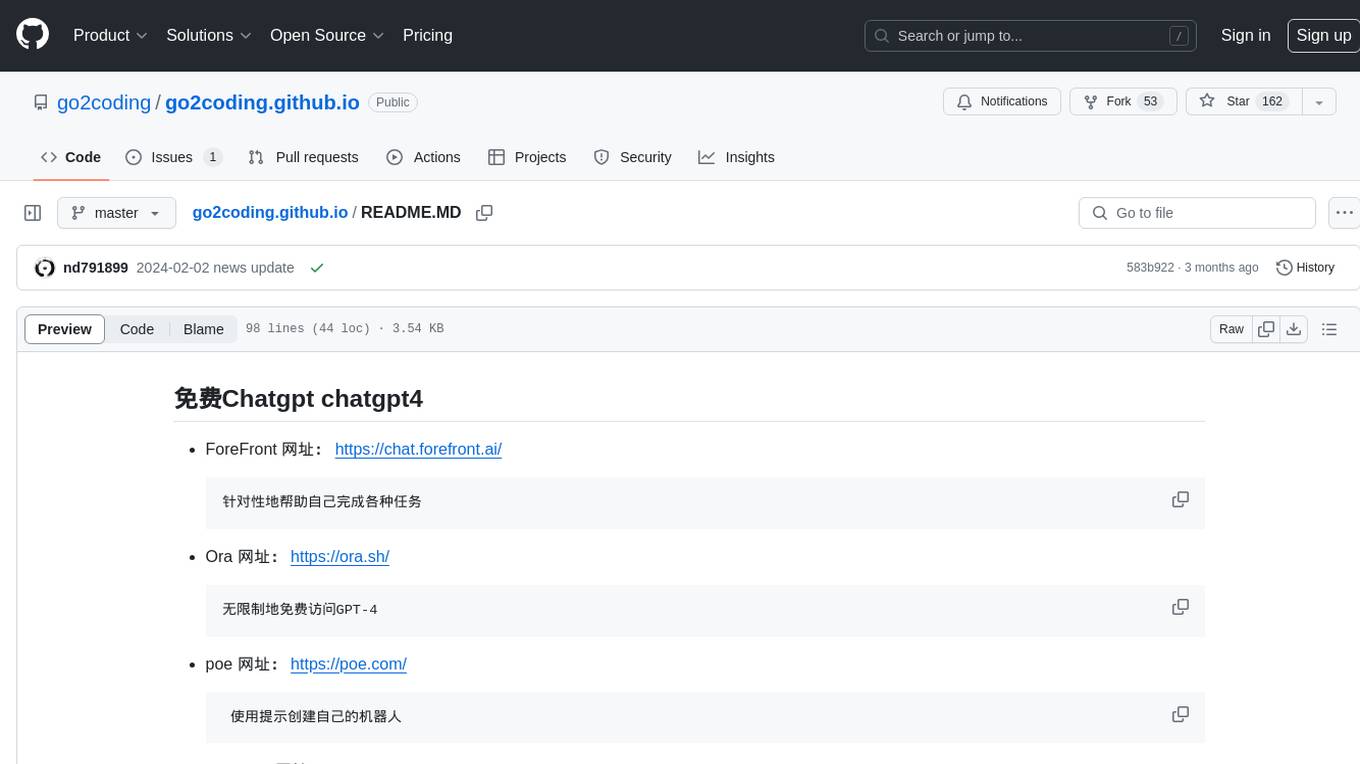
go2coding.github.io
The go2coding.github.io repository is a collection of resources for AI enthusiasts, providing information on AI products, open-source projects, AI learning websites, and AI learning frameworks. It aims to help users stay updated on industry trends, learn from community projects, access learning resources, and understand and choose AI frameworks. The repository also includes instructions for local and external deployment of the project as a static website, with details on domain registration, hosting services, uploading static web pages, configuring domain resolution, and a visual guide to the AI tool navigation website. Additionally, it offers a platform for AI knowledge exchange through a QQ group and promotes AI tools through a WeChat public account.

AI-Notes
AI-Notes is a repository dedicated to practical applications of artificial intelligence and deep learning. It covers concepts such as data mining, machine learning, natural language processing, and AI. The repository contains Jupyter Notebook examples for hands-on learning and experimentation. It explores the development stages of AI, from narrow artificial intelligence to general artificial intelligence and superintelligence. The content delves into machine learning algorithms, deep learning techniques, and the impact of AI on various industries like autonomous driving and healthcare. The repository aims to provide a comprehensive understanding of AI technologies and their real-world applications.
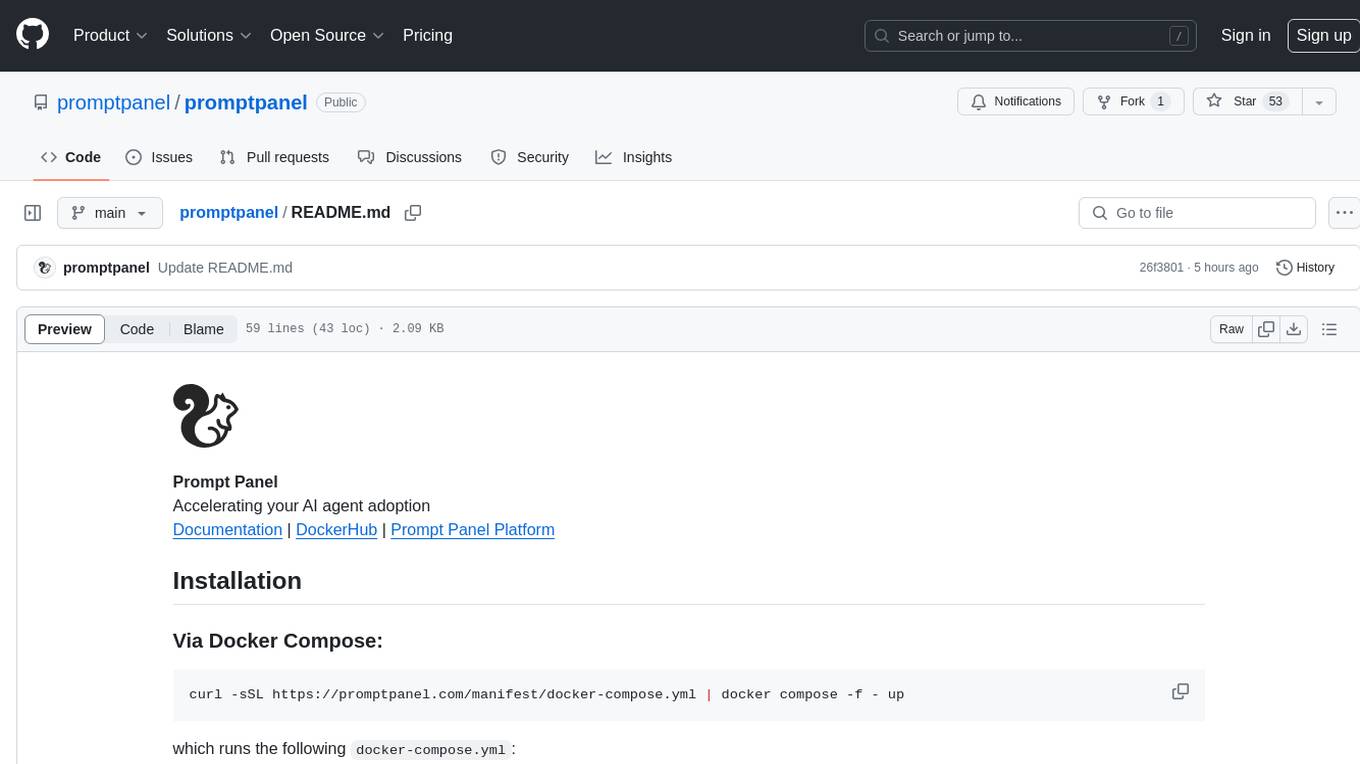
promptpanel
Prompt Panel is a tool designed to accelerate the adoption of AI agents by providing a platform where users can run large language models across any inference provider, create custom agent plugins, and use their own data safely. The tool allows users to break free from walled-gardens and have full control over their models, conversations, and logic. With Prompt Panel, users can pair their data with any language model, online or offline, and customize the system to meet their unique business needs without any restrictions.
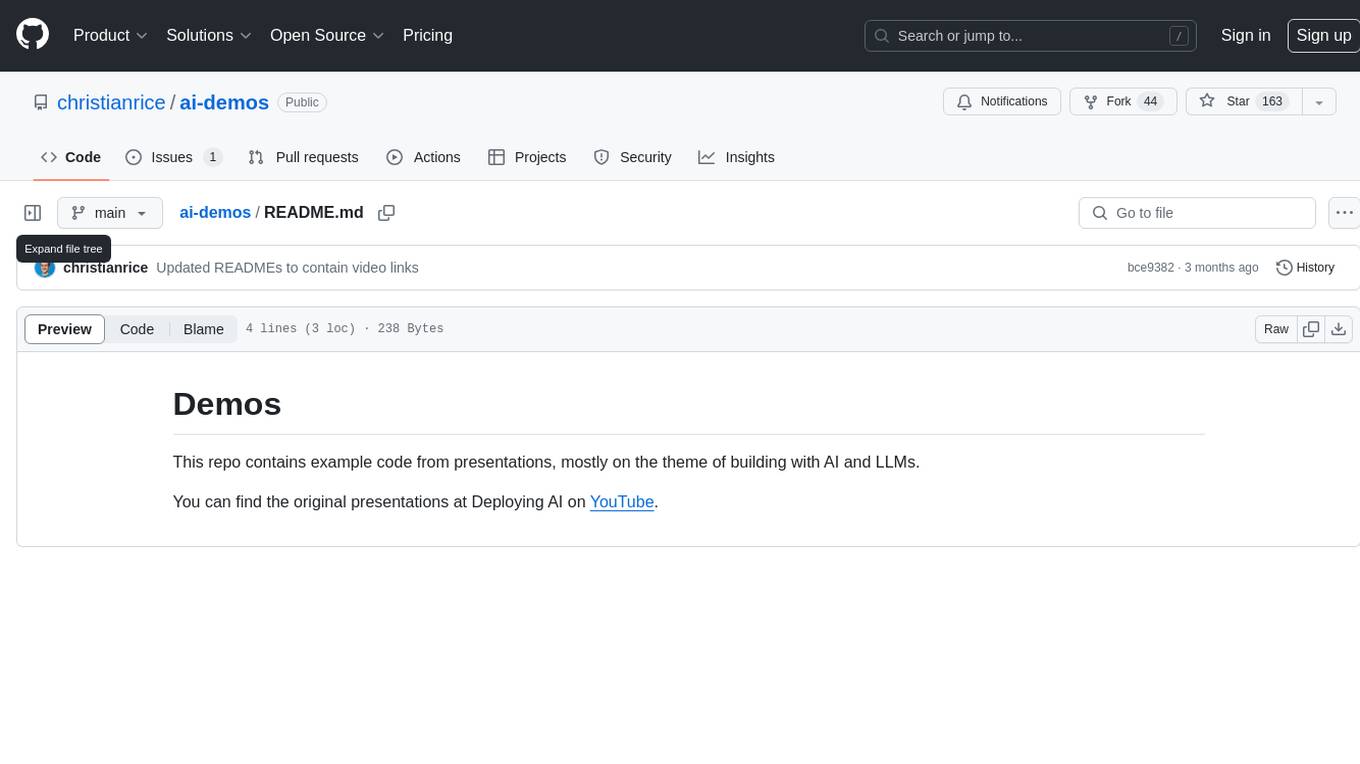
ai-demos
The 'ai-demos' repository is a collection of example code from presentations focusing on building with AI and LLMs. It serves as a resource for developers looking to explore practical applications of artificial intelligence in their projects. The code snippets showcase various techniques and approaches to leverage AI technologies effectively. The repository aims to inspire and educate developers on integrating AI solutions into their applications.
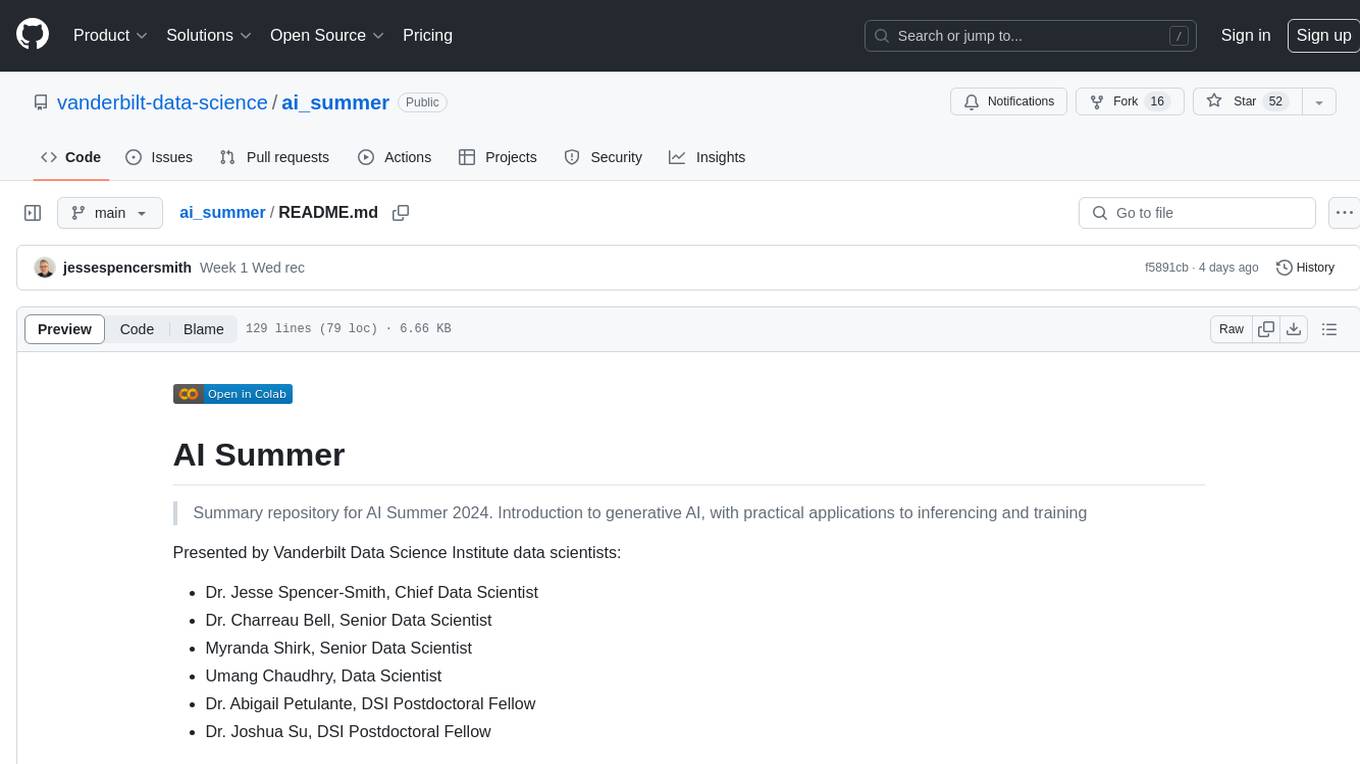
ai_summer
AI Summer is a repository focused on providing workshops and resources for developing foundational skills in generative AI models and transformer models. The repository offers practical applications for inferencing and training, with a specific emphasis on understanding and utilizing advanced AI chat models like BingGPT. Participants are encouraged to engage in interactive programming environments, decide on projects to work on, and actively participate in discussions and breakout rooms. The workshops cover topics such as generative AI models, retrieval-augmented generation, building AI solutions, and fine-tuning models. The goal is to equip individuals with the necessary skills to work with AI technologies effectively and securely, both locally and in the cloud.






